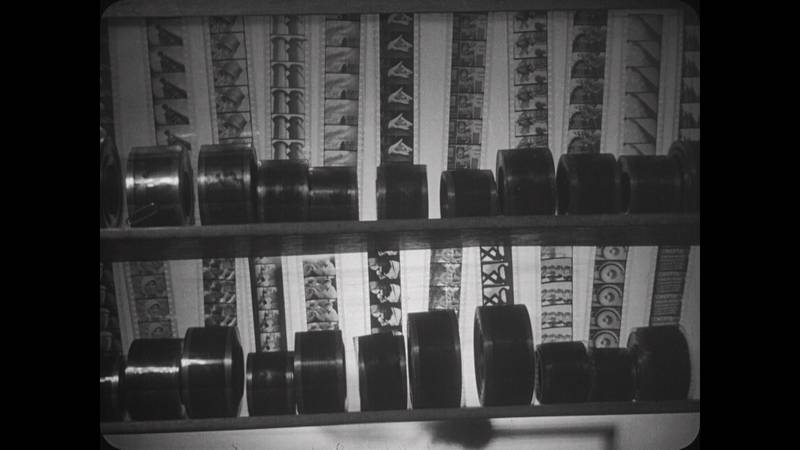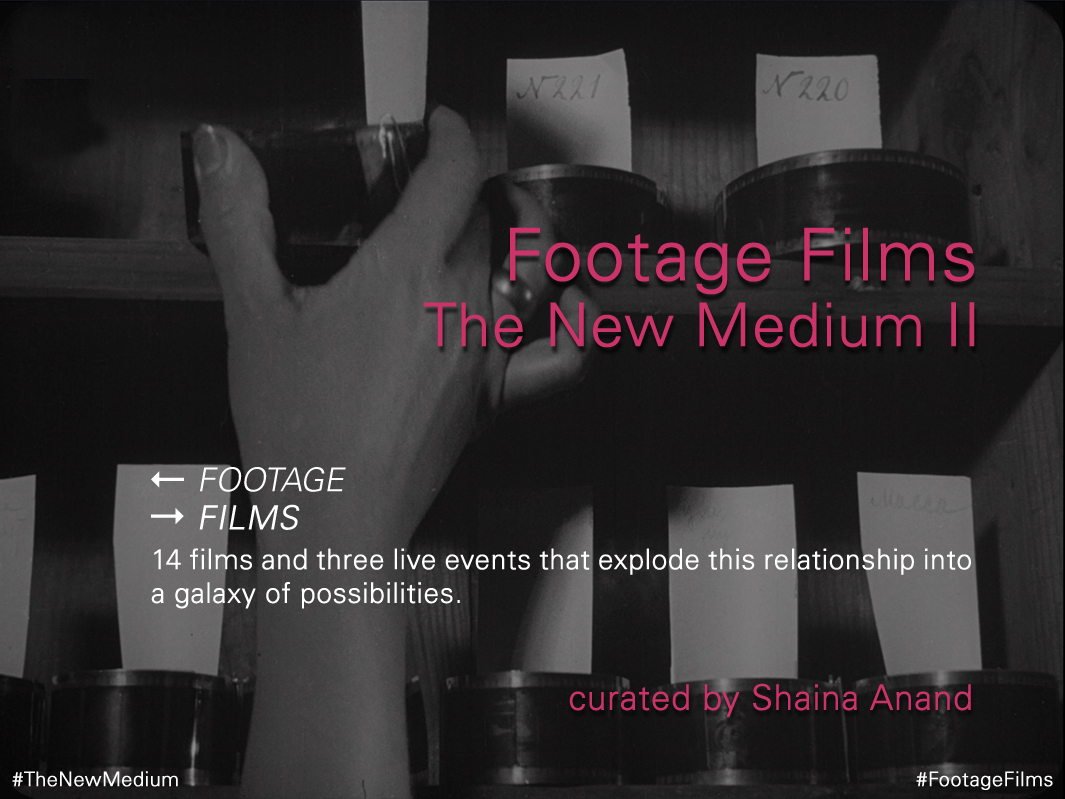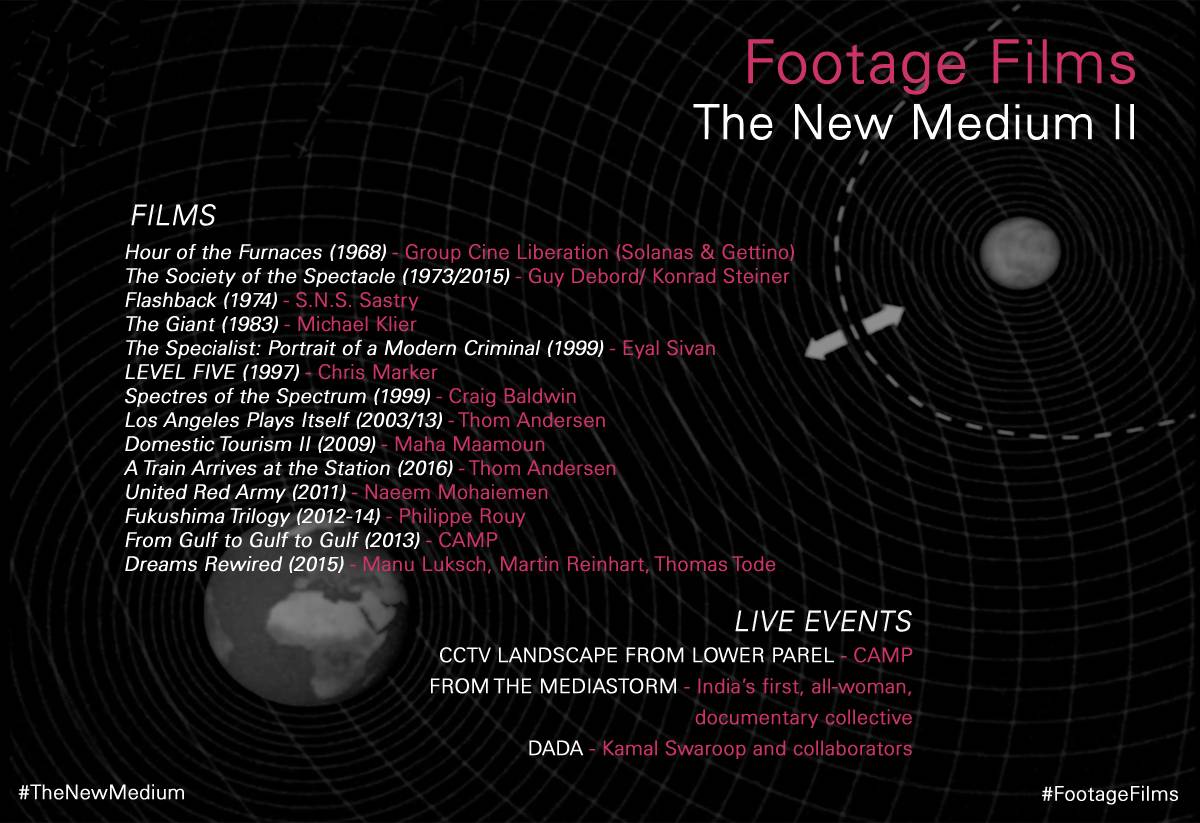
THE NEW MEDIUM II - FOOTAGE FILMS
Oct. 11, 2017 - Oct. 18, 2017





The New Medium was a curated programme for the Mumbai International Film Festival for three consecutive years (2016-2018). The inaugural program - in a twisted art-historical mode - framed cinema as a new medium (125 years old, when compared to the other arts), and scoured the century of cinema chronologically...
by Johan Grimonprez
150 mins| 2024|
7:00 pm
A story about the encounter of American Jazz and African decolonisation, via the UN and the CIA, with a lot of world around it.
A 200-year neighbourhood story told through a single camera mounted on a cinema hall, 90 minutes.
Opening event
The New Medium II: Footage Films
Friday 13th Oct 2017
5:30 pm to 7:00 pm
IMAX at PVR Phoenix
also
Monday 16th Oct 2017
5:30 pm to 7:00 pm
PVR Phoenix 6
With Ranjani Mazumdar, Shohini Ghosh, Charu Gargi and Shikha Jingan
Live Event
The New Medium II: Footage Films
14 Oct, PVR Icon audi 1, 12.00 pm
Meet the members of India's first, woman-only, documentary collective and revisit their history and prescient video practice.
with Kamal Swaroop and collaborators, a Journey through Phalke's world.
Live Event
The New Medium II: Footage Films.
17 Oct, PVR Icon 6:30 pm
A chronological viewing of 14 films beginning with Vertovs Man with the Movie Camera, and concluding with Farockis Parallel I-IV; The New Medium presents innovations in Cinema.
At the 18th MAMI Film Festival
20th October to 27th October 2016
Mumbai
When the moving image came into being it was seen as the seventh art, an alchemical medium with the potential to transform the spatial arts: architecture, sculpture and painting, and the temporal arts: music, poetry and dance.
A 2-day festival within the Mumbai Film Festival. Sixteen multi-screen films and video installations by pioneering filmmakers and artists, many of them Asian premieres, will be presented in the cinema hall. Curated by Shaina Anand.
CAMP presents Saturday or Sunday evening screenings through winter,
exploring footage both within and outside the usual capsule of "the
film". An experience that could be similar to watching films, or at
other times harder to digest, or slower to release, closer to the moment of
shooting, less censorious, and less fearful of finitude. Another life,
another world of viewing and listening experiences is always possible.
CAMP is part of the 16th Gwangju Biennale Pre-Programme events.
International Seminar on Documentary Film
“A collective / inarticulate harmony.”
A video performance tour of the work in three-acts with Shaina and Ashok.
Choreographies of the Everyday and Tokyo Art Week
Metabolic Container
Starting from 400 boxes of goods, part of a weekly, diasporic "trade" (one-way) between Batam in Indonesia, and Singapore. In which the container and its boxes are not just a carrier, but a medium.
featuring CCTV Social and pad.ma
Inlaks Fine Art Awardees 2025
6 week residency with CAMP
You are invited to the Open Day of Inlaks 2025 Fine Art Awardees 6-week residency with CAMP.
From cinematic to real to game violence, to the virtualities of Dalal Street, via intertidal zones in the dark, to a frozen sculpture of a building's data. NIGHT CRASH COLD BLOOD shows the artists’ new projects developed while in residency in Mumbai.
In depth discussion of the works, 4 pm to 6 pm.
Open Day, 6 pm to 10 pm.
Bombay Tilts Down
at
The 30th Anniversary of the Museum of Contemporary Art Tokyo